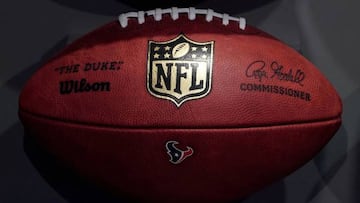How much revenue does the NFL generate each year?
Many US sports fans believe that there is only one true professional sports league, the National Football League, and everything else pales in comparison.


In the world of sports, a popular saying goes like this: “There’s the NFL, and then there’s everyone else.” This statement highlights the immense power and dominance that the National Football League holds over other sports. This superiority is evident in the league’s unmatched market share and significant revenues.
The NFL’s financial success can be attributed to various sources of revenue, which we will explore today. These revenue streams contribute significantly to the league’s annual earnings, which amount to billions of dollars.
TV Deals: A Broadcasting Bonanza
The NFL’s financial strategy revolves around its strategic investment in TV deals at both national and local levels. This strategy is justified by the fact that 19 out of the top 20 most-viewed TV shows in the history of the U.S. were Super Bowl games. These lucrative TV deals with CBS, NBC, and Fox bring in a staggering $3.1 billion annually. By the time their joint contract expires in 2022, these media giants will have put in a whopping $39.6 billion into the league. ESPN has also committed $15.2 billion in 2014 for the broadcast rights to Monday Night Football until 2021. Fox held the broadcasting rights for Thursday night games from 2018 to 2022 with a $3.3 billion contract. Amazon took over with a colossal $5 billion per year bid for the TV deals, establishing a new game date that coincides with Black Friday.
Corporate Sponsors: Billions in Brand Partnerships
Corporate sponsors play an important role in supporting the NFL’s financial stability, contributing at least $1 billion annually. One of the most valuable contributions comes from stadium naming rights, with companies such as AT&T and MetLife paying up to $10 million to have their brands associated with iconic venues like those of the New York Giants and the Dallas Cowboys. Some notable sponsors include Verizon ($300 million), Anheuser-Busch ($230 million), Nike ($120 million), Pepsi ($100 million), Oakley ($75 million), and Amazon ($75 million).
Ticket Sales: The In-Stadium Experience
TV deals are the primary source of revenue in the NFL. However, ticket sales also play a significant role. With the average NFL stadium seating 70,000 fans, a single match can generate $7 million, assuming a $100 ticket price. This amount is substantial but significantly less than the revenue generated from TV broadcasting.
Streaming and Gambling: Navigating the Digital Frontier
The NFL has embraced the digital age by partnering with Yahoo Sports, Verizon, and Amazon for streaming matches. These deals bring in around $20 million per match.
Additionally, the league has taken advantage of the growing sports betting industry, as at least twelve jurisdictions have legalized sports betting since 2018. This expansion provides another lucrative source of revenue for the NFL.
Non-TV Licensing Deals: Beyond the Broadcast
Related stories
Although TV contracts are crucial, the NFL has established profitable agreements beyond television broadcasts. An example of this is its 10-year partnership with Nike, which involves the production of branded merchandise sold through the league’s online store. This partnership has generated hundreds of millions of dollars in revenue for the NFL.
Advertising Deals: The Price of Prime Time
The NFL charges a high premium for advertising slots during their marquee events, with some companies willing to pay up to $5 million for a 30-second ad. This highlights the immense value of prime-time exposure during the league’s big games. By leveraging these revenue streams, the NFL has demonstrated its financial prowess and unrivaled status as a titan in the world of sports. The billions of dollars they amass annually display the league’s ability to go beyond the field and establish itself as a global economic powerhouse.

